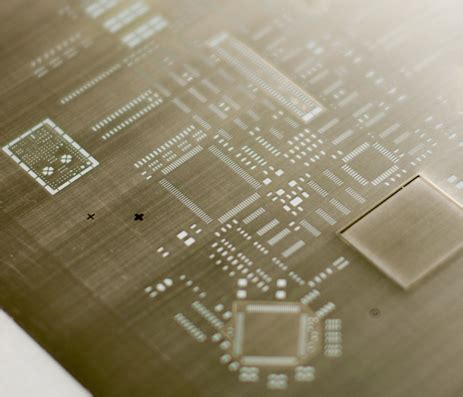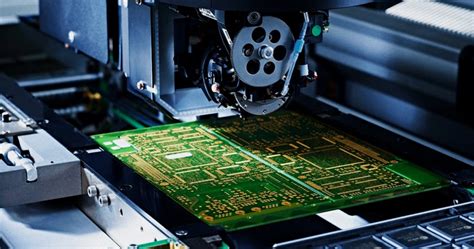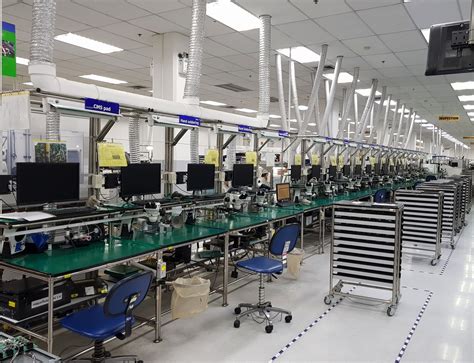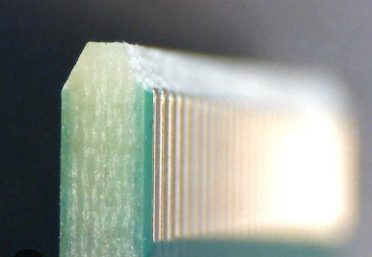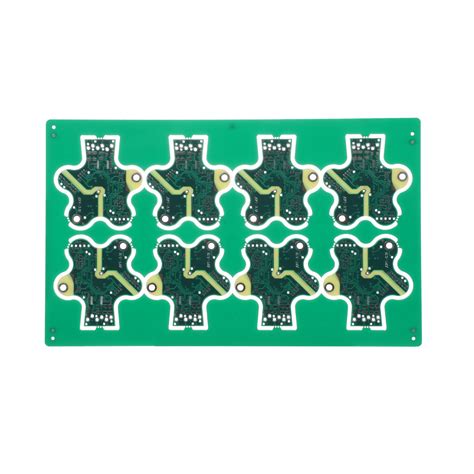Best Practices in Stencil PCB Assembly for Superior Outcomes
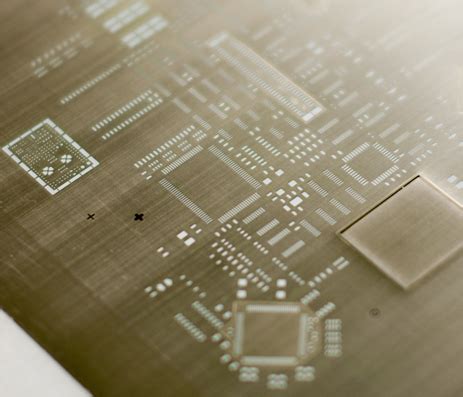
Key Takeaways
Successful stencil PCB assembly hinges on several vital practices that considerably enhance the quality and effectiveness of the manufacturing process. One of the foremost points is the emphasis on selecting the appropriate materials for both the stencil and solder paste. The quality of these materials directly impacts the adhesion and distribution during assembly. Implementing optimal techniques for applying solder paste is critical. Techniques such as ensuring a proper alignment between the stencil and PCB can drastically reduce defects.
Quality control measures not only help identify issues early but also play a significant role in delivering reliable PCBA results. Regular inspections and testing methods—such as Automated Optical Inspection (AOI)—can effectively catch discrepancies before they escalate into larger faults.
| Best Practice | Description |
|---|---|
| Material Selection | Choose high-quality stencils and solder paste. |
| Application Technique | Ensure perfect alignment during paste application. |
| Quality Control | Implement regular inspections using AOI methods. |
“Investing time in proper material selection and quality control measures leads to lasting benefits in PCB assembly.”
By adhering to these practices, manufacturers can significantly curtail common challenges like solder defects, misalignments, and other issues that may arise throughout the process, ultimately achieving superior outcomes in their electronic manufacturing efforts.
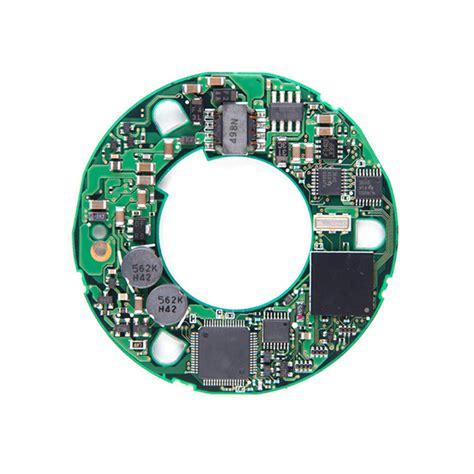
Introduction to Stencil PCB Assembly
Stencil PCB assembly is a critical process in the realm of electronic manufacturing, serving as a foundation for reliable PCB assembly. This technique involves the careful application of solder paste onto the printed circuit board (PCB) through a stencil, allowing for precise and efficient placement of electronic components. The effectiveness of this method hinges on various factors, including material selection, application techniques, and quality control measures. The use of the right stencil material can significantly influence the outcome—whether it’s ensuring that solder paste adheres well to the board or minimizing defects during PCBA. Equally important is the technique employed to apply solder paste; methods such as screen printing or fogging can yield different results depending on the specific requirements of the assembly process. Adhering to best practices in stencil PCB assembly not only enhances efficiencies but also plays a pivotal role in achieving superior outcomes across multiple electronic devices. By understanding these complex dynamics, manufacturers can optimize their processes and deliver high-quality products that meet stringent industry standards.

Importance of Material Selection
When it comes to stencil PCB assembly, the significance of material selection cannot be overstated. The performance and reliability of a printed circuit board assembly (PCBA) heavily depend on the quality and compatibility of the materials used throughout the assembly process. A careful choice of materials can greatly enhance the effectiveness of solder paste application, yielding precise dimensions and consistency, which are vital for ensuring optimal solder joint quality. Moreover, using high-quality materials, such as solder pastes that suit specific applications or various board types, ensures a strong bond between the components and the substrate, minimizing potential failure points.
In addition to solder pastes, other materials like stencil thickness, metal composition, and even the base material for circuit boards can play pivotal roles in achieving superior outcomes in electronic manufacturing processes. Incorrect material choices may lead to issues like insufficient solder wetting, poor adhesion, or even component damage during thermal cycling. Therefore, understanding the specific requirements of each project and selecting materials that align with those needs is a fundamental aspect of achieving success in PCB assembly. By focusing on thoughtful material selection, manufacturers can optimize their processes and ultimately produce reliable and high-performing electronic products.
Optimal Techniques for Applying Solder Paste
In stencil PCB assembly, achieving optimal application of solder paste is crucial for the performance and reliability of the final product. One effective method involves ensuring that the thickness of the stencil is appropriate for the component sizes and densities on the PCB. Thinner stencils can improve paste release but may compromise paste volume, while thicker stencils offer greater control over paste volume but can lead to issues with fine-pitch components. Additionally, it’s important to consider the material of the stencil; stainless steel or nickel stencils are often preferred due to their durability and precision in solder paste application.
Utilizing a squeegee with a suitable durometer can also enhance paste deposition accuracy; softer squeegees may conform better to varying surface profiles, whereas harder squeegees provide better control over release. Consistent pressure during squeegee operation is essential, as uneven pressure can lead to non-uniform solder paste deposits, adversely affecting solder joint quality.
Incorporating automated screening machines can further optimize pcb assembly processes by ensuring precise alignment and consistent application across multiple prints, reducing human error in manual processes. Furthermore, conducting regular maintenance on both stencils and equipment helps prevent defects caused by residual solder paste or misalignment. By implementing these effective techniques in pcba, manufacturers are better positioned to achieve superior outcomes, resulting in enhanced overall performance of electronic devices.
Quality Control Measures in PCB Assembly
Ensuring quality in PCB assembly is essential for achieving high-performance electronic devices. Implementing rigorous quality control measures at each stage of the pcba process can significantly reduce defects and enhance the reliability of the final product. One effective approach is to conduct regular inspections during various phases, such as pre-assembly and post-assembly stages. Utilizing automated optical inspection (AOI) systems can help detect inconsistencies and faulty connections in real time, allowing for immediate corrective action. Additionally, establishing standardized procedures for reflow soldering and using reliable materials are crucial aspects of maintaining quality during assembly. The adoption of statistical process control (SPC) can further mitigate variance by closely monitoring critical parameters, ensuring that the assembly process aligns with defined specifications. Ultimately, a comprehensive quality assurance strategy not only improves the integrity of stencil PCB assembly but also fosters a culture of excellence that permeates the entire production cycle. Balancing thorough inspections while maintaining efficiency is key to achieving superior outcomes in electronic manufacturing processes.
Common Challenges and Solutions in Stencil Assembly
In the realm of stencil PCB assembly, several challenges often arise, particularly in the application of solder paste and achieving high-quality results. One common issue is inconsistent solder paste deposition, which can lead to insufficient solder on pads or excessive solder leading to bridging. To address this, investing in a high-quality stencil design that properly matches the PCB layout is essential. This includes adjusting for features like pad size and aspect ratio. Another challenge involves maintaining an optimal stencil height, as incorrect stencil thickness can hinder accurate paste transfer. A solution here includes regular calibration and maintenance of equipment to ensure precise alignment during pcba processes.
Moreover, managing environmental factors such as temperature and humidity is crucial since they can significantly affect the viscosity of the solder paste. Implementing stringent environmental controls or utilizing moisture-sensitive materials can mitigate this risk. Quality control measures should also be reinforced by conducting regular inspections and utilizing automated optical inspection (AOI) systems post-assembly, ensuring that any deviations are identified immediately. By proactively addressing these challenges with strategic solutions, manufacturers can enhance the reliability and efficiency of their pcb assembly processes, ultimately leading to superior outcomes in electronic manufacturing.

Future Trends in Stencil PCB Processes
As the electronics industry continues to evolve, several future trends are emerging in stencil PCB assembly that promise to enhance the quality and efficiency of PCBA processes. One significant trend is the increased adoption of automation and advanced robotics for solder paste application. This shift not only streamlines operations but also improves accuracy, thereby minimizing defects and increasing overall yield. Additionally, manufacturers are increasingly exploring advanced materials for stencils, such as new alloys that offer better performance in high-temperature environments or specialized coatings that enhance the release of solder paste. These innovations aim to meet the demand for high-density interconnections while ensuring reliability in performance.
Another notable trend is the integration of smart technologies such as IoT sensors that provide real-time monitoring of stencil printing processes. These technologies enable operators to gather data on environmental conditions and material performance, facilitating predictive maintenance and aiding in immediate corrections during application. Furthermore, developments in machine learning algorithms allow manufacturers to analyze complex data sets, leading to more informed decisions about process optimization.
Emphasizing sustainability, there is a growing focus on reducing waste throughout the PCB assembly cycle by employing smarter design strategies and better resource management techniques. This aligns with global initiatives towards environmentally responsible manufacturing practices. As these trends gain traction, they hold promise for enhancing not only operational efficiency but also fostering a culture of continuous improvement within the realm of stencil PCB processes, ultimately contributing to superior outcomes in electronic manufacturing.
Case Studies of Successful Stencil PCB Assembly
In the realm of pcb assembly, several case studies demonstrate the efficacy of implementing best practices in stencil PCB assembly to achieve remarkable outcomes. For instance, a leading electronics manufacturer adopted advanced techniques in their solder paste application process, significantly improving their pcba yield rates. By investing in high-quality materials and utilizing precision stencils tailored to their unique design specifications, they achieved more consistent and reliable soldering results. Another notable case involved a company that focused on stringent quality control measures throughout the assembly process. By incorporating automated inspections and real-time monitoring systems, they were able to detect defects early on, thus minimizing rework costs and enhancing overall efficiency. These success stories underline the importance of aligning operational practices with industry standards for stencil assembly, showcasing how thoughtful implementation can lead to superior outcomes in electronic manufacturing. As these examples illustrate, prioritizing material selection, optimizing application techniques, and maintaining rigorous quality checks are crucial elements that can look to elevate any pcb assembly initiative to new heights.
Conclusion: Achieving Superior Manufacturing Outcomes
In the realm of pcb assembly, successful outcomes hinge on the meticulous application of stencil pcb assembly techniques. By adhering to best practices, manufacturers can enhance the overall efficiency and reliability of their processes. Selecting the right materials, particularly for solder paste, plays a crucial role in achieving optimal results. The importance of quality control measures cannot be overstated; these are vital in identifying potential defects and ensuring that every stage of the pcba process meets stringent standards. Furthermore, understanding and overcoming common challenges effectively leads to a more streamlined stencil assembly procedure. As the industry evolves, staying abreast of future trends will also contribute positively to manufacturing output. By integrating these strategies into daily operations, companies can significantly raise their standards and achieve truly superior manufacturing outcomes.
Conclusion: Achieving Superior Manufacturing Outcomes
In the realm of PCB assembly, the pursuit of excellence in stencil PCB assembly is paramount for achieving high-quality electronic devices. By adhering to best practices in material selection, manufacturers can ensure that only the finest solder paste is utilized, which directly affects the reliability and performance of the final product. Effective application techniques play a crucial role; employing precise methods for applying solder paste can drastically enhance adhesion and reduce defects. Additionally, implementing stringent quality control measures is essential to identify potential flaws during the PCBA process, allowing for timely corrections that safeguard against future failures. As we advance into an era where electronic components are becoming increasingly complex, staying abreast of emerging trends in stencil processes will be vital. Ultimately, by focusing on these key areas, companies can achieve remarkable outcomes in their manufacturing endeavors, setting a standard within the industry for quality and efficiency.

FAQs
What is stencil PCB assembly and why is it important?
Stencil PCB assembly involves the application of solder paste onto a printed circuit board (PCB) through a patterned stencil. This step is crucial as it directly impacts the quality and reliability of the final PCBA (printed circuit board assembly) as it determines how well components will adhere during soldering.
How can I ensure optimal solder paste application?
To achieve optimal solder paste application, consider using high-quality materials specifically designed for stencil PCB assembly. Additionally, employing precise stencil techniques—such as ensuring the stencil alignment is accurate and the right amount of pressure during printing—is essential for superior outcomes.
What quality control measures should I implement in my PCB assembly process?
Incorporating rigorous quality control measures, such as automated optical inspection (AOI) and regular audits of your PCBA, can help identify defects early in the manufacturing process. Continuous monitoring ensures that each step, from solder paste application to component placement, meets industry standards.
What are common challenges faced in stencil PCB assembly?
Common challenges include issues with solder paste consistency, alignment errors during component placement, and environmental factors impacting the quality of the assembly. Developing solutions such as maintaining a controlled environment and regular training for operators can mitigate these issues effectively.

